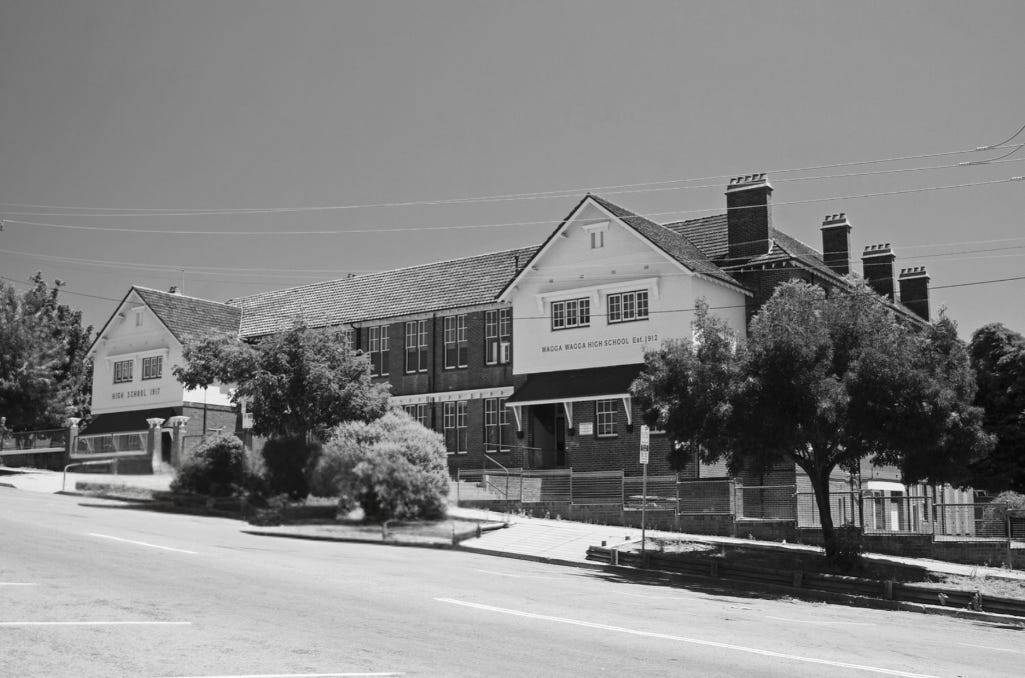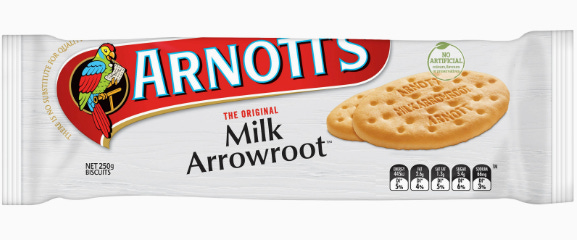Heat, dust, and the blunt edges of discipline shape much of this chapter. What follows is a short, spoiler-light guide to the slang, sounds, and textures that may be unfamiliar if you did not grow up in Australia, so the March scenes can settle in their own place.
“He told himself it was envy. But the heat in his throat felt like recognition.”
Where we are
March in Wagga brings heat that never quite lets go. Uniform collars stick, asphalt radiates, and even the cicadas seem restless. The rhythm of school and suburb sits inside that atmosphere: screen doors banging, the cough of a Ford ute, the hum of radios drifting from verandahs.
The oval is still there, but so too are the paths that stretch beyond it. One runs past the cemetery gates, a shortcut that students take when they want quiet, or when they need to arrive unnoticed. Another leads down to the Civic Centre bins, always stinking of milk and plastic in the sun. These are not just routes, they are part of Wagga’s geography of adolescence.
Everyday places and objects
The Wagga Baths. Everyone calls it the Baths. Chlorine in the nose, concrete under bare feet, whistles cutting the glare. Change sheds in corrugated tin, towels clutched high, swimmers tugged quick. If you turned your back to the wall, you could hide what you did not want seen.
The change sheds. Corrugated iron, chlorine in the air, concrete underfoot. At every country pool, the sheds were where boys learned what bodies looked like side by side, and where bruises could be hidden if you turned quick enough.
The ute. No vehicle is more Australian. In 1973, every street in Wagga had one parked out front, usually battered, with its tray rattling under the weight of scrap, firewood, or tools. Wayne’s old Ford is typical, coughing awake before dawn and leaving a haze of diesel.
The screen door. The soundtrack of a household. Light timber frames banged open and shut a dozen times a day, flywire stretched, hinges squealing. The noise carried across whole streets.
Milk Arrowroot biscuits. Arnott’s most modest offering, always slightly soft in summer, set out on saucers in libraries or church halls. A small, shared comfort, as much ritual as food.
Language and school culture
Bloody. The most ordinary intensifier, woven into complaint, anger, or casual banter. In Wayne’s mouth it lands heavy, sharper than a shout.
Deputy head. The title given to the second in charge at school, common in New South Wales through the 1970s. Standing on a portable stage, microphone in hand, delivering patriotism into the heat.
Cheers. A small but telling word. At thirteen, Christian says it to Mary with a crumpled hat in hand. Australian shorthand for thanks, tossed lightly, but carrying more weight than he realises.
The Sound of Autumn
Australia in March has its own soundtrack. Cicadas at full cry drown out thought. A dog behind a gate barks itself hoarse. A ute coughs awake. Radios fizz with static and news of Vietnam. At the Baths, music from a tape machine cuts through, clocks ticking, voices asking strange questions, and the ordinary afternoon feels suddenly foreign.
A mini glossary from the chapter
Bloody – everyday Australian intensifier
Ute – utility vehicle, Australia’s pickup
Screen door – light door with flywire, distinctive bang
Wagga Baths – public swimming pool complex
Change sheds – corrugated iron pool changing rooms
Milk Arrowroot – plain Arnott’s biscuit
Biro – ballpoint pen
Deputy head – senior school leader title
Cheers – Australian thank you
Cicadas – deafening insect chorus of summer
Then and now
In 1973, the discipline of school and home is blunt. Teachers bark, fathers lift belts from hooks, and words like “lazy” or “princess” mark as clearly as any bruise. Corporal punishment is routine, disappointment sharper than cruelty.
Yet the detail is what locates it: the slam of a screen door, the smell of diesel, the soft bite of a Milk Arrowroot, cicadas screaming against the heat, and boys turning their shoulders in the change sheds of the Wagga Baths.
Questions welcome
If anything still felt unfamiliar, say where you stumbled in the comments, and I will expand this guide so the next reader can ride the current more easily.





